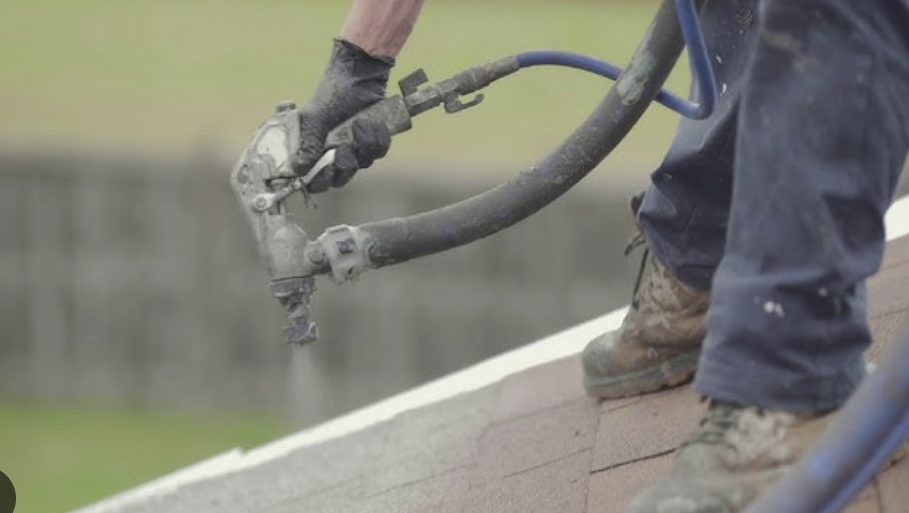.svg)

Your Roof’s First Job: Stop Fire in Its Tracks
When people think about roof performance, they often focus on leaks, wind, or hail. But there’s another enemy your roof has to fight — fire. Whether it’s an ember from a nearby blaze, fireworks, or a lightning strike gone wrong, your roof is the first and largest surface exposed to danger. A fire-resistant roof can be the difference between a scare and a catastrophe.
What Makes a Roof Fire-Resistant?
In the roofing industry, fire performance is measured by ASTM E108 / UL 790. These tests simulate real-world fire hazards:
A Class A rating — the highest available — means the roof can handle severe exposure without igniting, sustaining flame spread, or dropping burning debris.
The Secret Weapon: Roofing Granules
Asphalt is highly flammable on its own. Without some form of protection, it can ignite and sustain burning when exposed to flame or embers. This is why asphalt shingled roofs rely on mineral granules as a shield to pass these tests.
Here’s why they’re critical:
Without granules, your roof is essentially wearing a thin, flammable jacket in a firestorm.
The Weak Link: Granule Loss
Here’s the catch: On traditional roofs, granules don’t stay put forever. UV light, weather, foot traffic, and even ponding water loosen them over time. Once granules start shedding:

The Liqua-Roof Difference: Granulock™ Technology
We’ve solved the problem with Granulock™ Technology — our proprietary resin system that locks granules in place permanently. Granulock is a proprietary feature of Liqua-Roof that locks visible roof granules into a durable resin, enhancing impact resistance, UV protection, and weatherproofing. Applied as a liquid, it restores and strengthens asphalt shingled roofs while improving their appearance.
Instead of loosely embedded particles, our process fuses granules into the coating surface so they can’t wash away under rain, wind, or standing water.
Why it matters:
Performance Beyond Fire Safety
Granulock™ doesn’t just help in a fire.
A Safer, Smarter Roof Starts Here.
Fire safety, UV resistance, and long-term durability all come down to the same thing: the integrity of your granule layer. We’ve taken that proven protection and engineered it to last.
With Liqua-Roof’s Granulock™ Technology, you’re not just getting a Class A roof — you’re getting a Class A roof that stays Class A.
Fill out the form below and a member of our team will be in touch to schedule your free assessment.